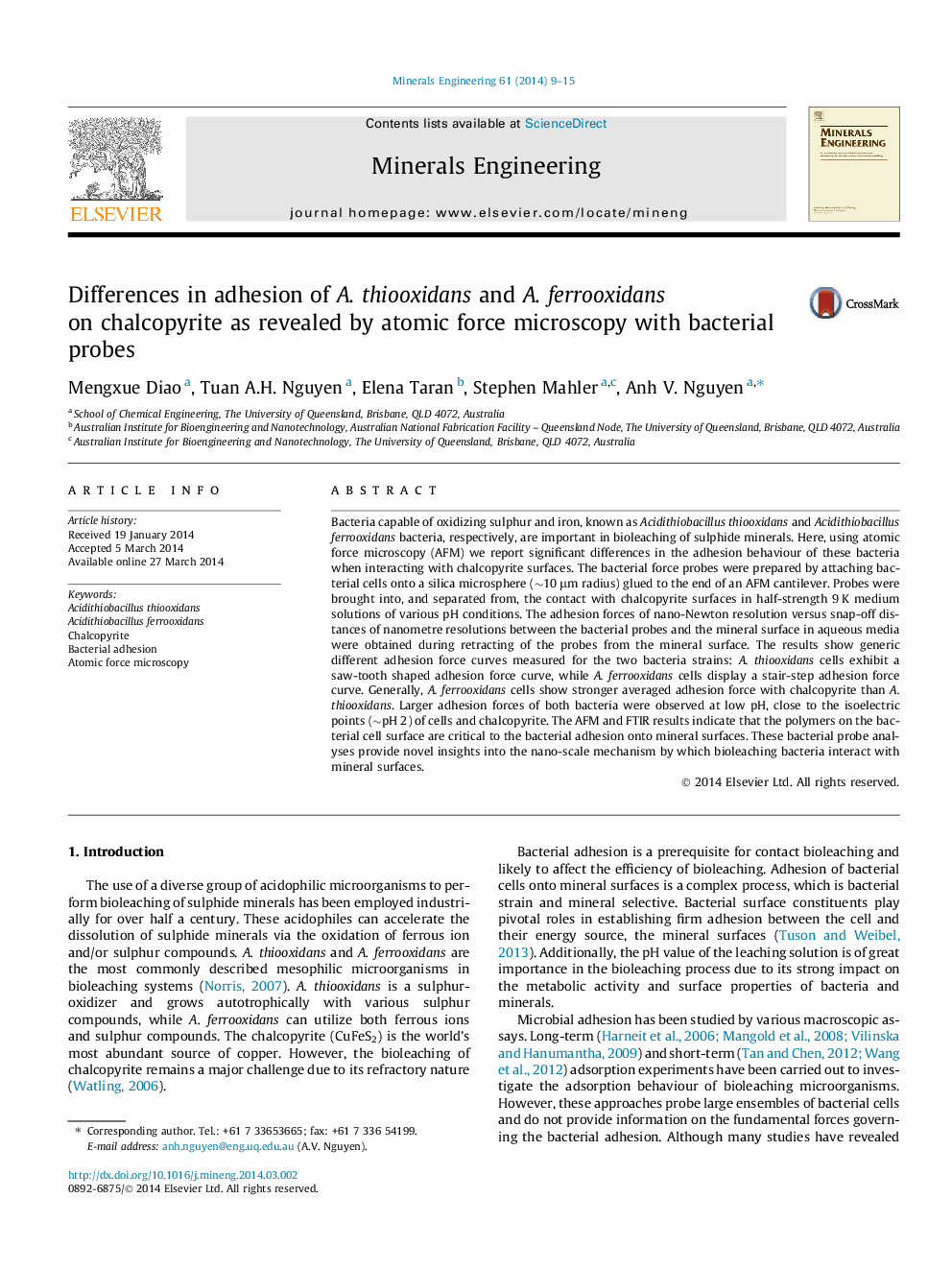| Article ID | Journal | Published Year | Pages | File Type |
|---|---|---|---|---|
| 233264 | Minerals Engineering | 2014 | 7 Pages |
•Study of bacteria–mineral interactions relevant to bioleaching process.•BM adhesion measured by bacteria-coated AFM colloidal probe technique.•Adhesion of A. ferrooxidans onto chalcopyrite is stronger than A. thiooxidans.•Both bacteria show large adhesion forces at low pH.
Bacteria capable of oxidizing sulphur and iron, known as Acidithiobacillus thiooxidans and Acidithiobacillus ferrooxidans bacteria, respectively, are important in bioleaching of sulphide minerals. Here, using atomic force microscopy (AFM) we report significant differences in the adhesion behaviour of these bacteria when interacting with chalcopyrite surfaces. The bacterial force probes were prepared by attaching bacterial cells onto a silica microsphere (∼10 μm radius) glued to the end of an AFM cantilever. Probes were brought into, and separated from, the contact with chalcopyrite surfaces in half-strength 9 K medium solutions of various pH conditions. The adhesion forces of nano-Newton resolution versus snap-off distances of nanometre resolutions between the bacterial probes and the mineral surface in aqueous media were obtained during retracting of the probes from the mineral surface. The results show generic different adhesion force curves measured for the two bacteria strains: A. thiooxidans cells exhibit a saw-tooth shaped adhesion force curve, while A. ferrooxidans cells display a stair-step adhesion force curve. Generally, A. ferrooxidans cells show stronger averaged adhesion force with chalcopyrite than A. thiooxidans. Larger adhesion forces of both bacteria were observed at low pH, close to the isoelectric points (∼pH 2) of cells and chalcopyrite. The AFM and FTIR results indicate that the polymers on the bacterial cell surface are critical to the bacterial adhesion onto mineral surfaces. These bacterial probe analyses provide novel insights into the nano-scale mechanism by which bioleaching bacteria interact with mineral surfaces.
